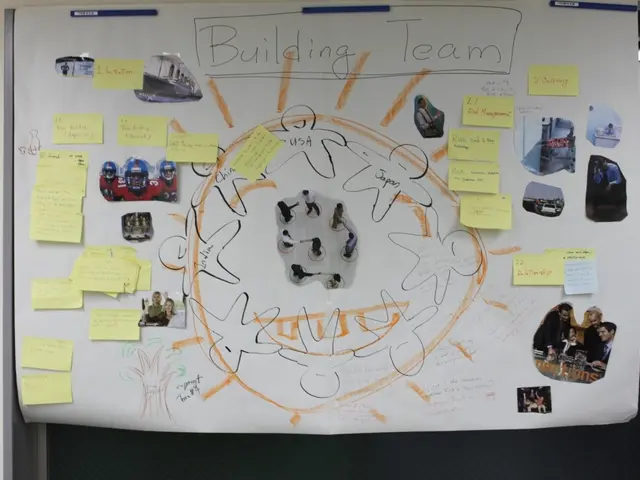Design of Fire, Health, and Life Safety Systems
In the realm of construction, ensuring both fire safety and sustainability is a delicate balance that requires a strategic, nuanced approach. The government's Independent Review of Building Regulations and Fire Safety, titled Building a Safer Future, underscores this need, emphasizing early coordination, clear accountability, and cross-disciplinary understanding for delivering safe, sustainable, and compliant buildings.
Simón Santamaria, a prominent figure in the industry, stresses the importance of early-stage fire strategy integration and ongoing collaboration between disciplines for holistic fire safety coordination. This approach is exemplified by Stantec's method, which treats fire strategy as a living document, using digital tools and Building Information Modelling (BIM) to track fire-critical information and foster transparent decision-making.
Architects are under more pressure than ever to get things right the first time, and tools like those provided by Siderise can help them evidence compliance and select the right systems at the design stage. Siderise was brought in early during the design phase for Waterhouse Gardens, a five-tower residential development, to address passive fire protection and drainage requirements.
The challenge lies in incorporating fire safety into lifecycle carbon assessments and reducing both operational and embodied carbon while managing low-probability, high-impact risks. Fire-resistant mineral materials, while effective, tend to be energy-intensive to produce. Organic, combustible insulation materials, on the other hand, can improve sustainability but raise fire risks. To find a balance, architects should collaborate with specialists to select biogenic but fire-safe alternatives, such as hempcrete, and combine warm organic materials with cold mineral ones to optimize fire performance and reduce carbon footprint.
The Building Safety Act reshapes the responsibilities of structural engineers and design teams, placing a greater emphasis on regulatory compliance and mandatory competence. Evidence of competence is required through training logs, audit trails, and clear design documentation. Compliance with mandatory competence is maintained by ensuring only qualified professionals undertake fire safety design roles, with paraprofessionals supervised appropriately, and continuing education to stay updated on evolving legislation and technologies.
In retrofitting high-risk buildings, understanding a building's legacy and critical failure points is crucial. The Grenfell Tower refurbishment serves as a cautionary example of unbalanced trade-offs in fire safety and sustainability. Darren Brennan emphasizes the value of manufacturer collaboration, stating that getting companies like Siderise involved early can improve detailing, reduce costly rework, and ultimately save lives.
In summary, architects should take a holistic, collaborative approach combining rigorous code compliance, strategic specification, and sustainable material innovation, backed by thorough risk assessment and coordination, to achieve compliant, safe, and sustainable design suitable for Gateway Two submission requirements.
[1] Integrated Material Selection and Lifecycle Assessment [2] Mandatory Competence and Regulatory Compliance [3] Specification and Coordination for Gateway Two [4] Use of Advanced Tools and Simulation [5] Ongoing Training and Competence Oversight [6] Strategic Leadership and Risk Governance
Sources:
[1] Harland, S. (Associate Director at Civic Engineers) [2] The Building Safety Act [3] RD 164/2025 (Spain) [4] Unnamed speaker at a recent industry conference
- In the battle to harmonize education and health in today's holistic wellness movement, it's crucial to embrace a strategy that combines rigorous research in health-and-wellness, science, and fitness-and-exercise for comprehensive preventative health measures, as advocated by leading researchers like Simón Santamaria (Associate Director at Civic Engineers).
- To foster a harmonious integration of education, health, and sustainability in the 21st century, policy makers should focus on initiatives like Mandatory Competence and Regulatory Compliance, encouraged by The Building Safety Act and complemented by continuous learning and training efforts, as emphasized by sources such as the unnamed speaker at a recent industry conference.





